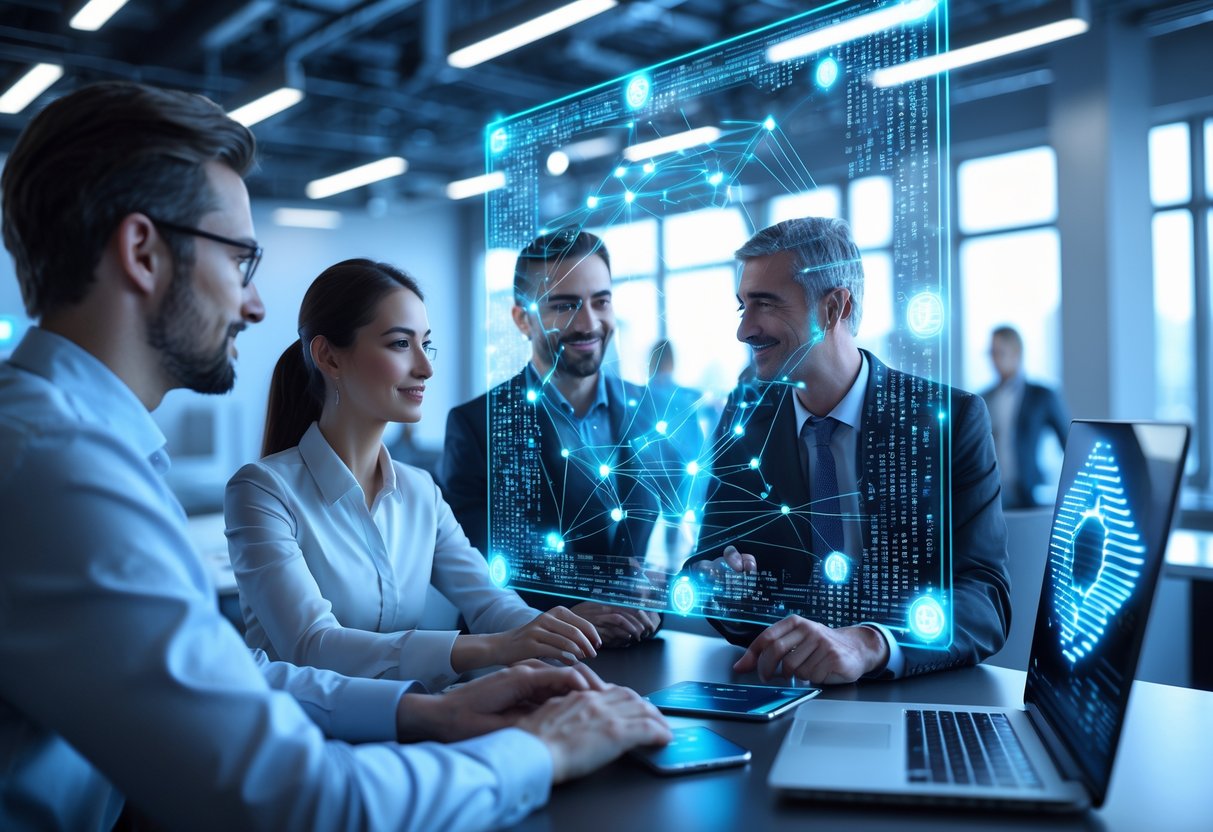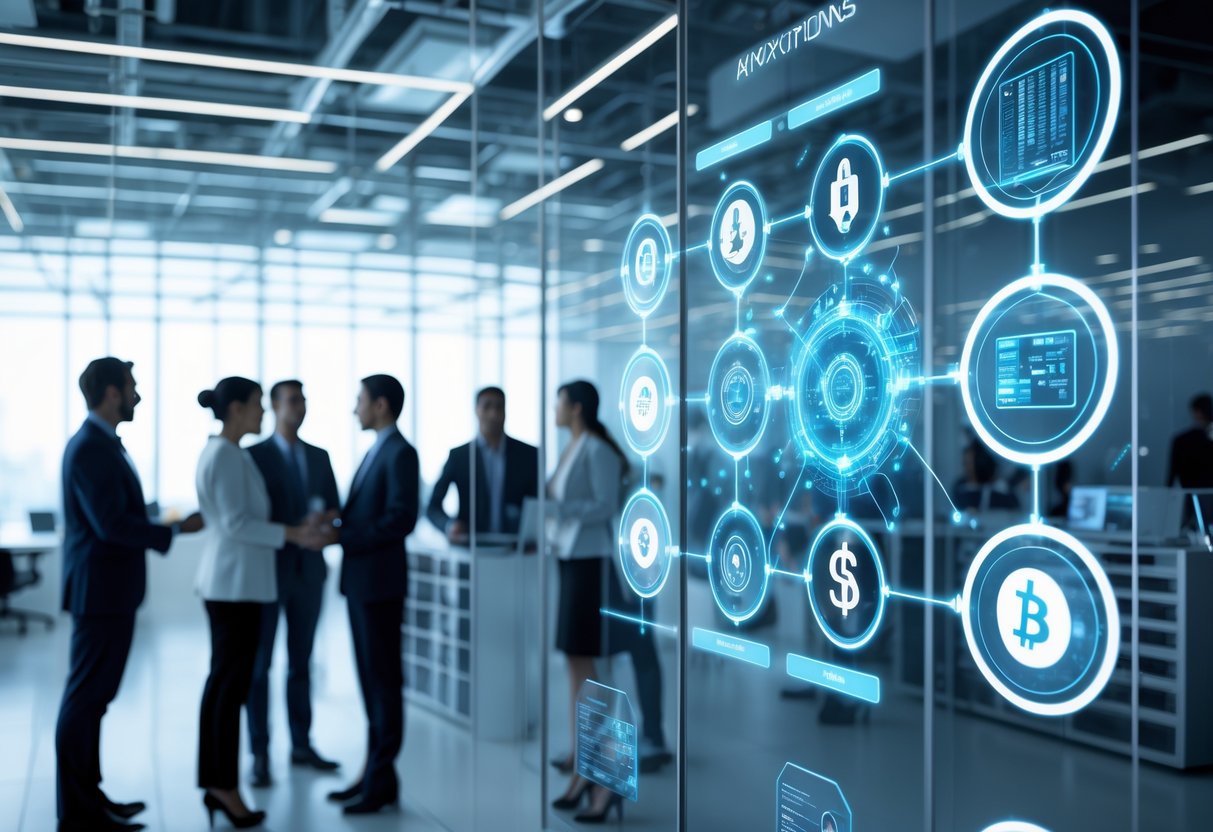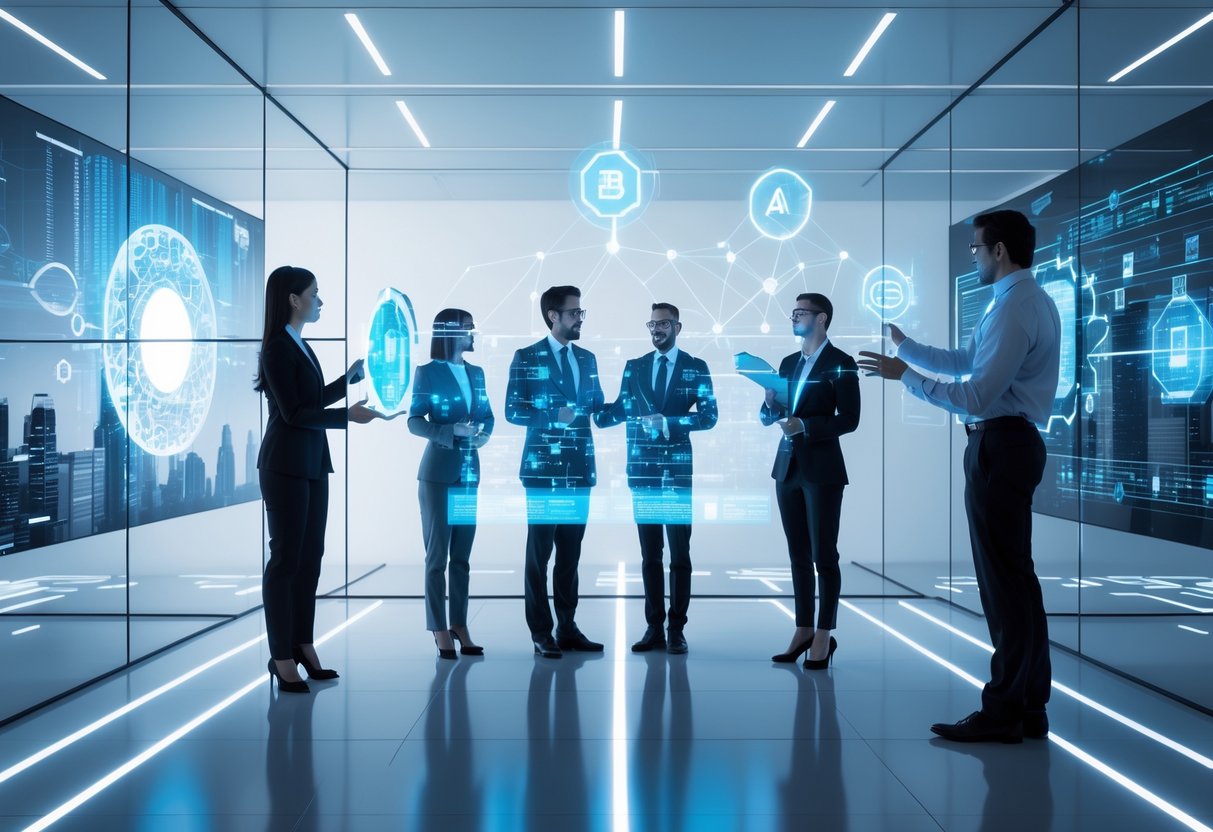
AI and blockchain are two of the most transformative technologies of our time. These systems are changing how we handle data, make decisions, and conduct business across many industries. Blockchain provides a secure, transparent way to record transactions, while AI helps analyze patterns and automate complex tasks.

See Rewards Linked to This Topic—Follow Steps to Get:
Great news—exclusive perks are just a few steps away! Follow these simple actions to unlock bonuses linked to this topic!
How It Works (Fast & Easy!)
1️⃣ Check Your Rewards in Seconds
→ Click Here to See How Much You Qualify For (No commitment!)
First-time withdraw can unlock 7K+ USD.
2️⃣ Connect Your Wallet
Use any mobile or desktop wallet (MetaMask, Trust Wallet, etc.)—approved in seconds!
3️⃣ Cash in Your Pocket in 15 Minutes!
Get your funds fast—no credit checks, no waiting.
Why This is a Game-Changer 💎
✔ Each month there is a free offer reward for all users.
🔥 Limited-Time Offer – Claim Your $7K+ Now!
👉 Get Instant Access Here
No hidden fees. No credit checks. Just fast cash against your crypto! – and this is not a financial advice.
The integration of blockchain and artificial intelligence creates powerful solutions that address limitations in each technology when used alone. Blockchain enhances AI by providing verified, trustworthy data sources and making AI decisions more transparent. At the same time, AI improves blockchain by making these networks smarter and more efficient.
Together, these technologies are revolutionizing fields like finance, healthcare, and supply chain management. In finance, they enable faster loan processing with better security. In healthcare, they protect patient records while allowing for advanced analysis. The combination offers benefits like improved data security, increased transparency, and more efficient automated systems.
Core Principles of AI and Blockchain Integration

When combining AI and blockchain, several fundamental principles guide their successful integration. These principles focus on creating systems that are secure, transparent, and trustworthy while preserving the unique strengths of both technologies.
Decentralization and Data Immutability
AI and blockchain integration relies heavily on decentralization as a foundational element. Unlike traditional centralized systems, blockchain distributes data across multiple nodes in a network. This structure eliminates single points of failure and control.
The immutable ledger of blockchain ensures that once data is recorded, it cannot be altered or deleted. This immutability creates a permanent, tamper-proof record of all transactions and AI operations.
For AI systems, this means training data and model decisions become verifiable and traceable. When AI makes a prediction or decision, that information gets stored on the blockchain’s immutable ledger, creating accountability.
Consensus mechanisms like Proof of Work or Proof of Stake verify transactions without central authorities. These protocols ensure all network participants agree on the state of the data, providing AI systems with reliable information.
Transparency and Trustworthiness
Transparency forms the backbone of successful AI and blockchain integration. Blockchain’s transparent nature allows all participants to view the same information, creating trust through visibility rather than authority.
Every AI action recorded on a distributed ledger technology becomes transparent and auditable. This visibility helps users understand how AI systems reach conclusions and make decisions.
The transparent framework addresses the “black box” problem in AI. Instead of obscure decision-making processes, blockchain creates clear audit trails for AI operations.
Trust in AI systems grows when people can verify:
- Where training data came from
- How models were developed
- What factors influenced specific decisions
- When and how the system was updated
This transparency encourages adoption of AI technologies in sensitive fields like healthcare and finance where trust is essential.
Enhanced Security and Data Privacy
Blockchain technology significantly enhances security for AI systems through encrypted data storage and transmission. The decentralized ledger technology protects information from unauthorized access and tampering.
AI data privacy concerns find solutions in blockchain’s cryptographic techniques. Personal information can remain private while still being usable for AI training through techniques like zero-knowledge proofs and secure multi-party computation.
Smart contracts automate security protocols, ensuring consistent application of privacy rules. These self-executing contracts maintain data integrity throughout the AI processing pipeline.
The combination creates a security framework where:
- Data remains protected by encryption
- Access requires proper authentication
- Changes leave permanent records
- Privacy preferences follow the data
This security-focused approach enables data sharing for AI development while maintaining strict privacy standards and regulatory compliance.
Key Applications of AI and Blockchain

AI and blockchain technologies are transforming multiple industries by creating secure, efficient, and intelligent systems. These technologies work together to solve complex problems while maintaining data integrity and enabling automation across various sectors.
Financial Services and Banking
Blockchain and AI are revolutionizing financial services through enhanced security and efficiency. Banks now use blockchain for secure transactions while AI algorithms detect fraud patterns that humans might miss.
Smart contracts automatically execute financial agreements when specific conditions are met, reducing the need for intermediaries. This cuts costs and speeds up processes like loans and international payments.
AI-powered trading systems analyze market data in real-time, identifying investment opportunities faster than human traders. These systems process massive amounts of financial information to make data-driven predictions.
Blockchain’s immutable ledger combined with AI creates transparent financial records that can’t be altered, helping prevent financial crimes. This partnership has enabled new services like automated insurance claims and personalized banking experiences.
Supply Chain and Logistics
Supply chain management benefits greatly from AI and blockchain integration. Blockchain creates an unchangeable record of product journeys from manufacturer to consumer, ensuring authenticity and reducing counterfeit goods.
AI algorithms optimize shipping routes and inventory levels, predicting demand patterns and potential disruptions before they occur. This helps companies maintain just-in-time inventory while avoiding shortages.
Smart sensors connected to blockchain networks track environmental conditions during transport, automatically documenting if products like medications remain at proper temperatures.
Traceability becomes nearly perfect as each product’s history is stored on the blockchain and analyzed by AI. Companies can quickly identify the source of contaminated food or defective parts, turning recalls from weeks-long processes into precise, targeted actions.
Healthcare and Data Management
AI and blockchain are transforming healthcare by securing patient data while enabling powerful analysis. Blockchain creates secure, patient-controlled medical records that can be selectively shared with providers.
Medical researchers use AI to analyze anonymized health data stored on blockchain networks, accelerating drug discovery while maintaining privacy. This combination helps identify potential treatments for diseases by analyzing patterns across millions of records.
Smart contracts automatically handle insurance claims and payments when treatment conditions are met. This reduces paperwork and speeds up reimbursement for both patients and healthcare providers.
AI-powered diagnostic tools compare patient symptoms against blockchain-verified medical databases, helping doctors make more accurate diagnoses. The immutable nature of blockchain ensures this data hasn’t been tampered with, creating trustworthy AI recommendations.
Autonomous Systems and the Internet of Things
The Internet of Things (IoT) benefits from combining AI intelligence with blockchain security. Smart homes use AI to learn resident preferences while blockchain secures the data exchanges between connected devices.
Autonomous vehicles share road condition data through blockchain networks while AI systems process this information to improve navigation decisions. This creates a secure, collective intelligence for safer self-driving experiences.
Predictive maintenance becomes more reliable as AI analyzes equipment sensor data stored on blockchain networks. Manufacturing companies can anticipate machine failures before they happen, reducing costly downtime.
Smart cities use these technologies to manage everything from traffic flow to energy usage. AI optimizes resource allocation while blockchain ensures data integrity and privacy for citizens, creating more efficient urban environments without compromising security.
Technological Advancements and Future Opportunities

AI and blockchain technologies are evolving rapidly, creating new possibilities across industries. These innovations are changing how contracts function, improving data analysis capabilities, and enabling new organizational structures.
Smart Contracts and Automation
Smart contracts represent one of blockchain’s most powerful innovations. These self-executing contracts automatically enforce agreements when predetermined conditions are met, eliminating the need for intermediaries.
AI enhances smart contracts by adding intelligence to contract execution. Machine learning algorithms can identify patterns that trigger specific contract clauses, making them more responsive to real-world events.
Automation through these technologies reduces human error and speeds up processes. For example, insurance companies now use AI-powered smart contracts to automatically process claims after detecting events like flight delays or natural disasters.
Companies implementing these systems report up to 80% reduction in processing times and significant cost savings. This efficiency allows businesses to focus resources on growth rather than administrative tasks.
Advanced Analytics and Decision-Making
AI and blockchain create powerful tools for advanced analytics and decision-making. The combination allows for secure, transparent data analysis that wasn’t possible before.
Machine learning and deep learning algorithms can process massive datasets stored on blockchain networks. This helps identify trends and make accurate market predictions that inform investment decisions.
Natural language processing enables sentiment analysis of news and social media, providing insights about market movements. When stored on blockchain, these analyses create immutable records of decision factors.
Reinforcement learning algorithms constantly improve by analyzing outcomes of previous decisions. This creates a feedback loop that enhances customer experience through increasingly personalized services.
Financial institutions using these technologies report 30% more accurate market forecasts compared to traditional methods.
Decentralized Autonomous Organizations and Web3
Decentralized Autonomous Organizations (DAOs) represent a revolutionary approach to organizational structure. These blockchain-based entities operate through community governance rather than traditional hierarchies.
AI systems help DAOs function by managing voting processes, analyzing proposals, and executing community decisions. This creates truly autonomous agents that can operate with minimal human intervention.
Web3 infrastructure combines blockchain transparency with AI capabilities to create user-centric internet experiences. Users maintain ownership of their data while benefiting from personalized services.
Several pioneering DAOs now manage billions in assets using AI-powered governance systems. These organizations demonstrate how traditional business models can transform through technological innovation.
The integration of AI with blockchain in Web3 applications creates systems that learn from user behavior while respecting privacy and ownership rights.
Challenges, Risks, and Ethical Considerations
AI and blockchain technologies face significant hurdles despite their transformative potential. These challenges range from technical limitations to profound ethical dilemmas that must be addressed for responsible implementation.
Data Security and Cybersecurity Risks
Blockchain systems are often touted as highly secure, but they remain vulnerable to various cyberattacks. The immutability of blockchain data presents a double-edged sword – while it ensures records cannot be altered, it also means that security breaches can have permanent consequences.
51% attacks remain a significant threat, where malicious actors gain control of more than half of a network’s mining power. This allows them to manipulate transaction verification and potentially engage in double-spending.
Smart contract vulnerabilities pose another serious risk. Coding errors can be exploited, as seen in the infamous DAO hack where $50 million was stolen due to a simple programming oversight.
When AI integrates with blockchain, additional attack vectors emerge. Adversarial attacks could target AI algorithms, inserting harmful data that compromises decision-making processes across the entire chain.
Scalability and Interoperability
Scalability remains one of blockchain’s most pressing challenges. Current blockchain networks face significant limitations in transaction processing speeds. Bitcoin manages only 7 transactions per second, while Ethereum handles around 15-30, far below what mainstream adoption would require.
Energy consumption presents another scalability concern. Proof-of-Work consensus mechanisms demand enormous electricity, raising sustainability questions about widespread implementation.
Interoperability between different blockchain systems and AI platforms creates additional complexity. The lack of standardized protocols makes it difficult for various blockchain networks to communicate effectively with each other and with AI systems.
Legacy system integration presents further hurdles. Many industries have established infrastructure that cannot easily connect with new blockchain and AI technologies without significant investment and technical challenges.
Privacy, Accountability, and Ethics
AI and blockchain integration raises profound privacy concerns. While blockchain offers pseudonymity, the permanent nature of blockchain records means that if identity is ever connected to a wallet, all past transactions become visible.
The “right to be forgotten” under regulations like GDPR directly conflicts with blockchain’s immutability. Personal data cannot be deleted from a blockchain once recorded, creating significant compliance challenges.
Ethical AI decision-making becomes even more critical when immutably recorded on blockchain. Biased algorithms can perpetuate discrimination that becomes permanently encoded in the system.
Accountability becomes complicated in decentralized systems. When autonomous AI makes decisions recorded on blockchain, determining responsibility for harmful outcomes presents legal and ethical challenges.
Transparency must be balanced with confidentiality. While blockchain provides transaction visibility, certain applications require data protection that must be carefully designed into these systems.
Frequently Asked Questions
AI and blockchain technologies continue to evolve and merge in new ways. These combinations solve real-world problems across industries and create opportunities for innovation.
How are AI and blockchain integrated in financial systems?
AI and blockchain integration has revolutionized financial systems through automated smart contracts and enhanced security protocols. Banks now use AI algorithms to detect fraud patterns while blockchain verifies transactions without intermediaries.
The combination enables faster cross-border payments that would typically take days to process. Financial institutions can now complete these transactions in minutes with lower fees.
Risk assessment has improved as AI analyzes blockchain data to identify potential issues before they become problems. This proactive approach helps prevent financial crises and protects consumer assets.
What are the main use cases for combining AI with blockchain technology?
Supply chain management represents one of the strongest use cases for AI and blockchain integration. Companies track products from origin to consumer with immutable records while AI optimizes routing and inventory.
Healthcare systems use these technologies to secure patient records while maintaining privacy. AI analyzes health data stored on blockchain to identify treatment patterns and improve care outcomes.
Digital identity verification has become more secure through blockchain’s tamper-proof records and AI’s ability to detect fraudulent attempts. Government agencies and businesses implement these solutions to protect citizen and customer information.
What educational courses are recommended for learning about AI and blockchain integration?
MIT offers specialized courses on blockchain and AI fundamentals with practical application modules. These programs cover both theoretical concepts and hands-on development skills.
Coursera partners with tech companies to deliver courses on programming smart contracts with AI components. Students learn Solidity, Python, and integration frameworks used in industry applications.
Professional certification programs from Blockchain Council provide specialized training in AI-blockchain integration. These certifications help professionals demonstrate expertise to potential employers.
In what ways are companies leveraging AI and blockchain to drive innovation?
Retail giants implement AI and blockchain to create transparent supply chains customers can verify. Shoppers scan QR codes to see product journeys from manufacturing to store shelves.
Energy companies use smart grids powered by blockchain with AI optimization to distribute resources efficiently. This reduces waste and allows consumers to sell excess power back to the grid.
Insurance firms automate claims processing through AI-verified blockchain records. This speeds up payments to customers while reducing fraud through immutable transaction history.
What tools are available for developing projects that utilize both AI and blockchain?
Hyperledger Fabric provides enterprise-grade blockchain infrastructure with AI integration capabilities. Developers use this framework to build secure business applications with machine learning components.
TensorFlow can connect directly to blockchain platforms through specialized APIs. This allows AI models to access and process on-chain data while maintaining security protocols.
Development platforms like ChainLink bridge AI systems with multiple blockchain networks. This connectivity allows for cross-chain operations and data verification from various sources.
How does the convergence of AI and blockchain impact the banking industry?
Banking security has dramatically improved through AI and blockchain convergence. Artificial intelligence monitors transactions while blockchain creates unalterable records of all activities.
Customer service in banking now features AI chatbots that access blockchain-verified customer information. This enables 24/7 personalized support while maintaining data integrity.
Loan approval processes have become faster and more accurate through AI analysis of blockchain-verified financial histories. Banks can make better lending decisions with reduced risk of default.
Leave a Reply